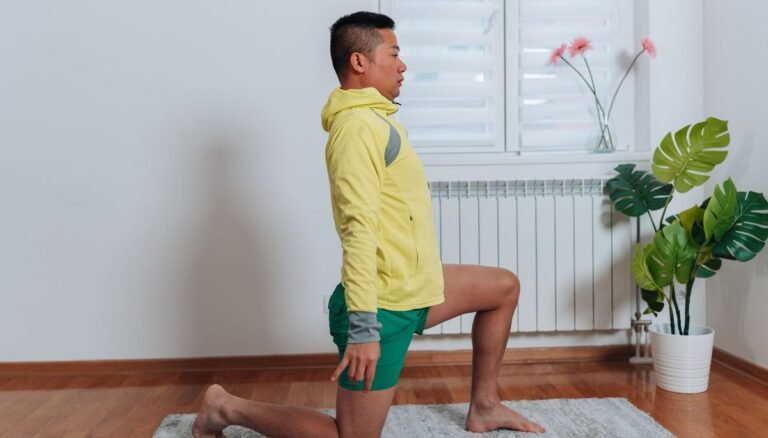We know runners should stretch regularly, but most of us choose to spend more time running instead. I do too. I love my weekly yoga class and feel great afterwards, but I don’t regularly do running-specific stretches. The repetitive motion of running can lead to tension and stiffness in the front of your hips, as well as your back and shoulders, so it’s a good idea to release any tension buildup so you can move more freely.
This YouTube video from Mobility Doc Dr. Chloe Costigan features four great stretches for runners that will help increase mobility in your hip flexors, front hips, and thoracic spine (mid-back). “Remember, running is a full-body exercise that requires mobility from head to toe,” Dr. Costigan writes in her blog. “Don’t neglect areas like your upper back, shoulders, and hips – these are opportunities to work on flexibility and muscle activation.”
Mobility Doc is a sports-specific physical therapy clinic run by Costigan and Dr. John Giacolone for rehabilitation and injury prevention. The video is the first of a four-part “Yoga for Runners” series, aimed at improving running form and preventing injury through focused stretches to increase mobility. “Ten to 15 minutes a day can make a big difference if you’re doing it right,” says Dr. Giacolone in the video introducing the services the duo offer.
“Focusing on your spine and posture can unlock hidden potential,” Costigan says in the video. Have you ever been surprised at how hunched you look in a race photo? “This is your chance to fix that,” Costigan says. Improving your posture can also help you breathe easier while you run.
“The friction caused by reduced flexibility means your muscles can’t work as well as they should,” Costigan says. “If your muscles are too tight, you may not get the full benefit of working hard.”
4 Yoga Poses to Increase Mobility
To do these poses, you’ll need a yoga mat, two blocks (Walmart sells yoga blocks for $1 apiece), and a foam roller (Amazon and Walmart both sell inexpensive, easy-to-use ones). Costigan recommends doing three rounds of each of the three exercises after Camel Pose.
In the video, Camel Pose is used as a pre-mobility assessment to measure your current range of motion and is offered in three versions of varying difficulty. You’ll do Camel Pose at the beginning and end of the session, so you can see how your mobility has improved during this 12-minute routine. “Now that your hip flexors and upper back are open, you’ll find it much easier to perform full backbends,” says Costigan.
1. Camel Pose
If you’re new to yoga, camel pose might seem daunting, but take it slow and follow Costigan’s instructions to start with the easiest version: “This deep backbend stretches your hip flexors, quads and shoulders, and opens up the front of your body,” says Costigan.
2. Foam Roller Thoracic Extension
“This works your thoracic spine, or mid-back,” says Costigan. By arching your back over the foam roller and focusing on each vertebra, you’ll stretch your back muscles, improving flexibility and movement in your mid- and upper back. On your second and third rounds, you’ll find it easier to stretch your mid-back a little more.
3. Half-kneeling hip flexor stretch
This is a great way to stretch your hip flexors. “For runners, this is great for building your ability to extend your hips. If you can’t fully extend your hips, no matter how much strength you work, your glutes won’t be activated.” Don’t forget to switch legs when you’re done.
4. Crab Rock
“This brings together glute activation, hip flexor mobility, thoracic extension and shoulder flexibility,” Costigan says. “Increasing mobility in these areas will help you maintain better running form over longer distances. Good form translates to more efficient running and reduced risk of overuse injury.”
Getting this pose right is even more important than the ending position, as moving around in this pose opens up the front of the body, which can become very tight with running.
Try Camel Pose again at the end of this sequence and you’ll be amazed at how easy it is. It increases flexibility in your mid-back, shoulders and front of the body, which in turn improves posture, freedom of movement and muscle activation as you run.


